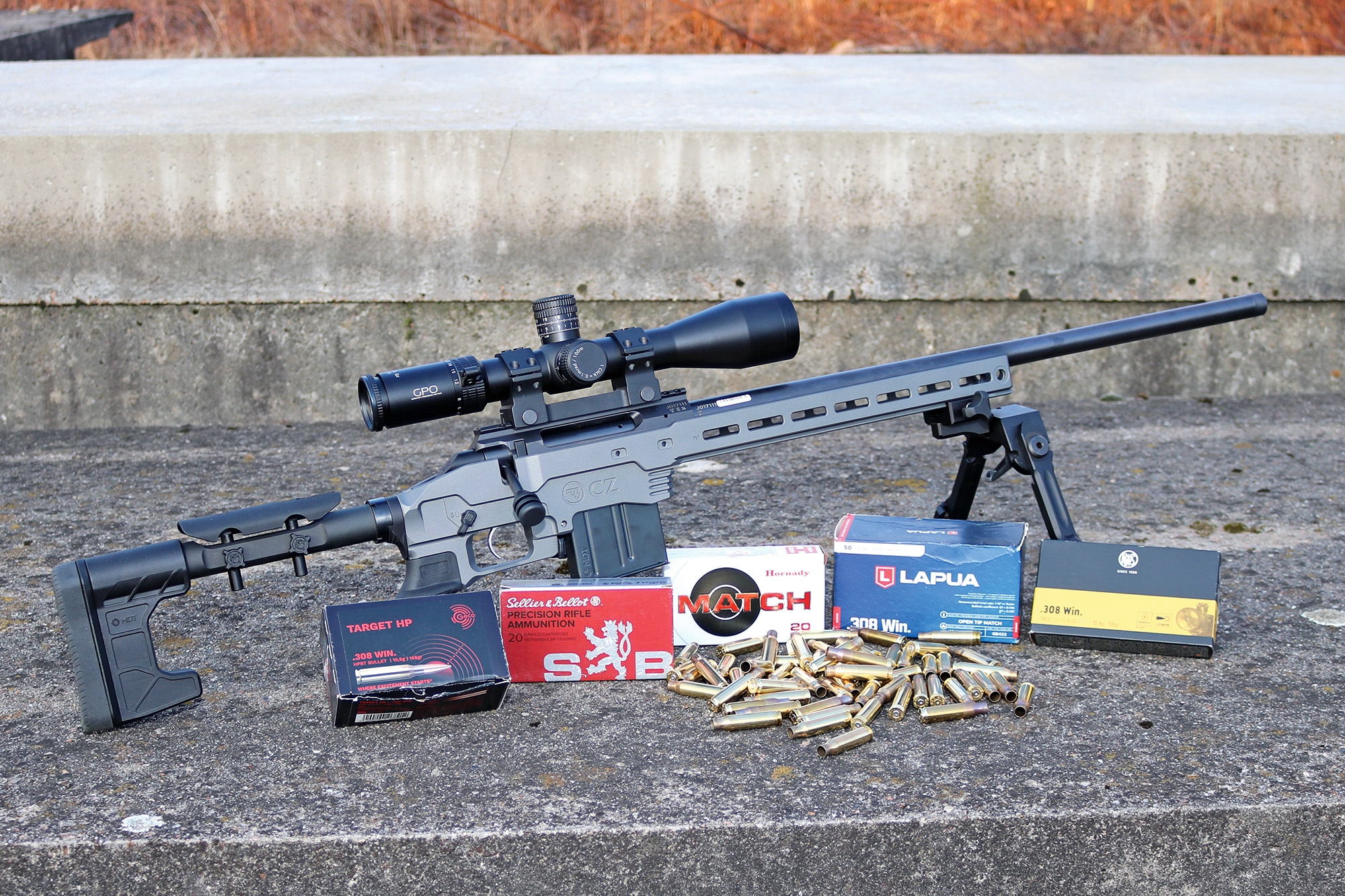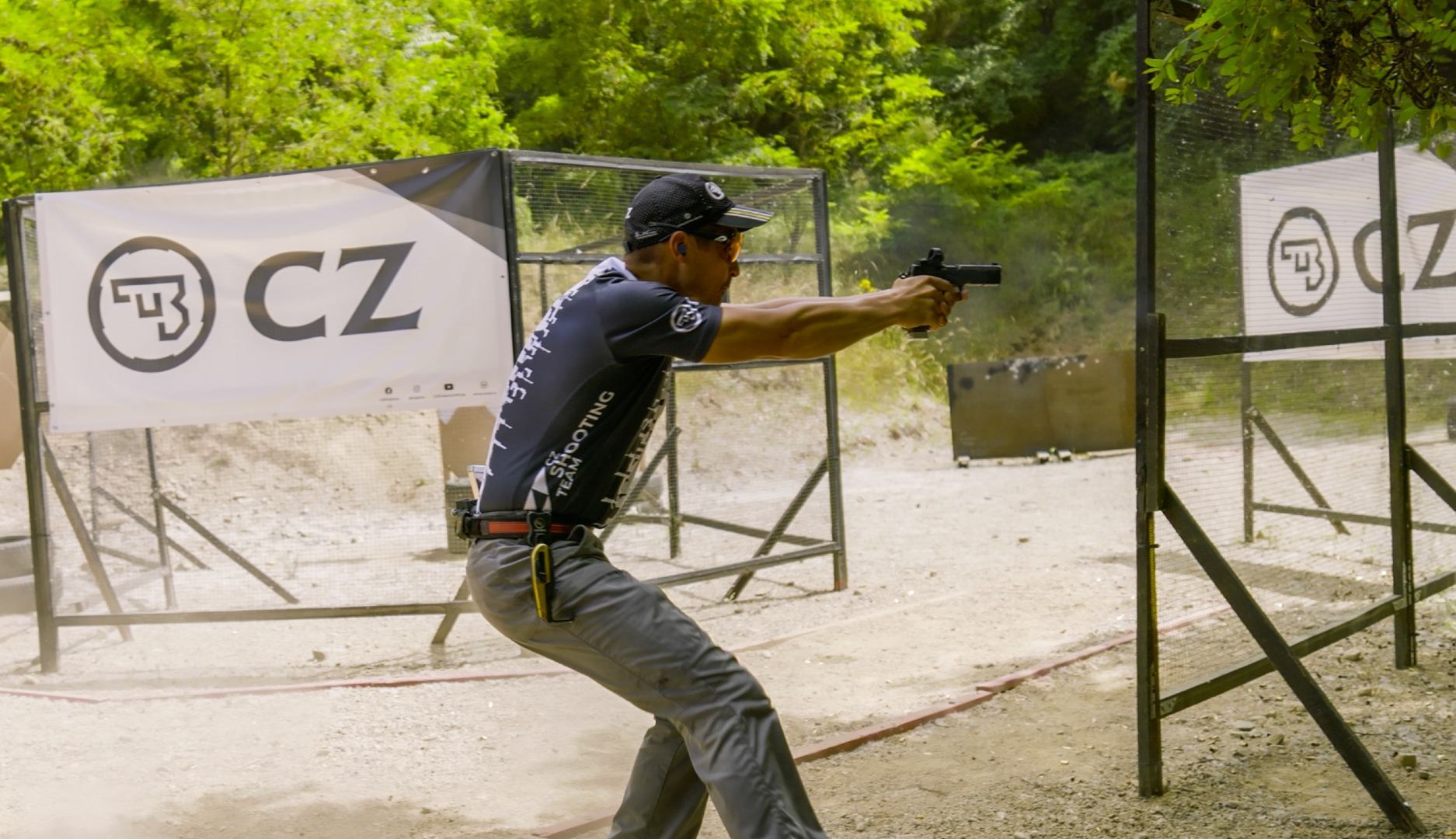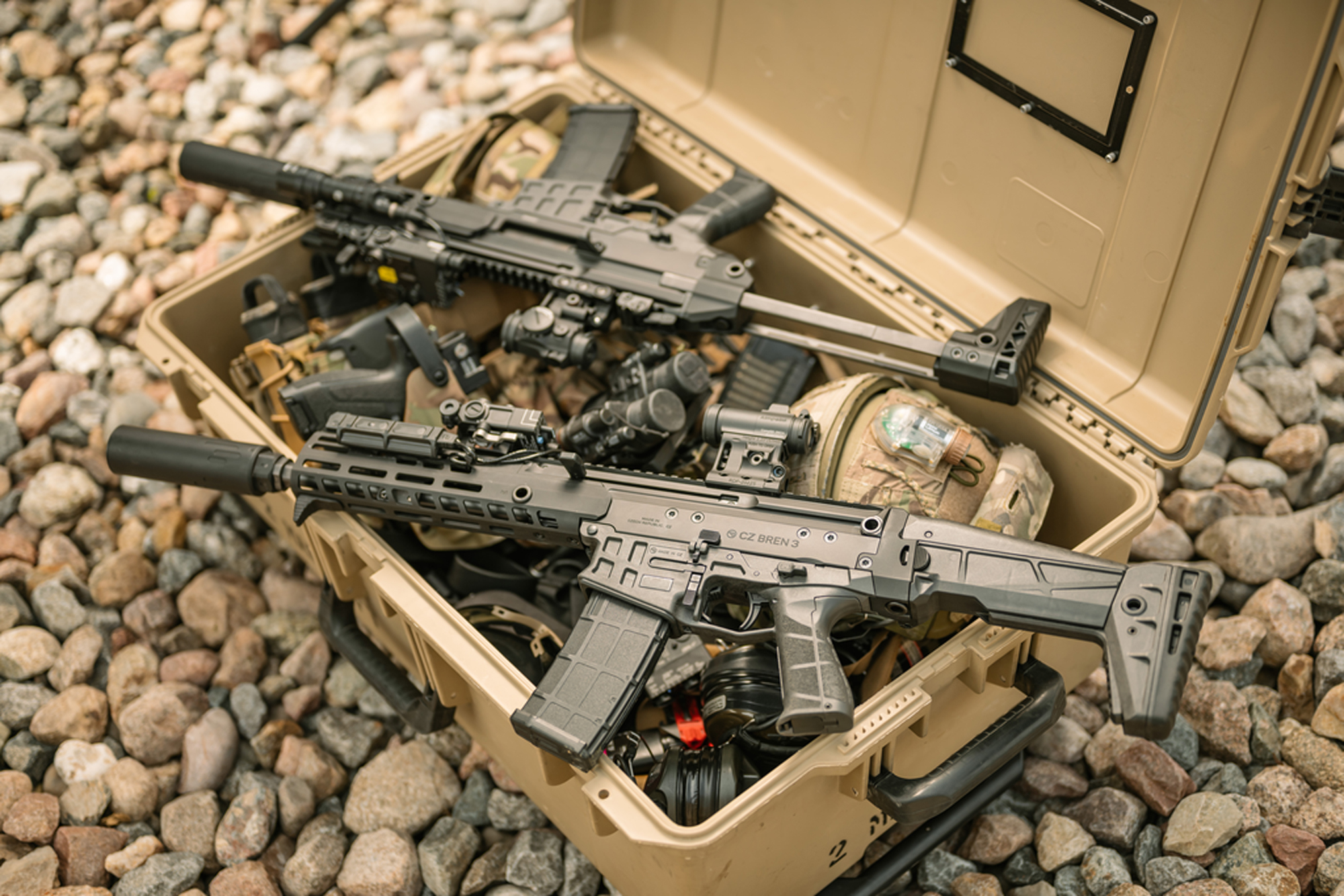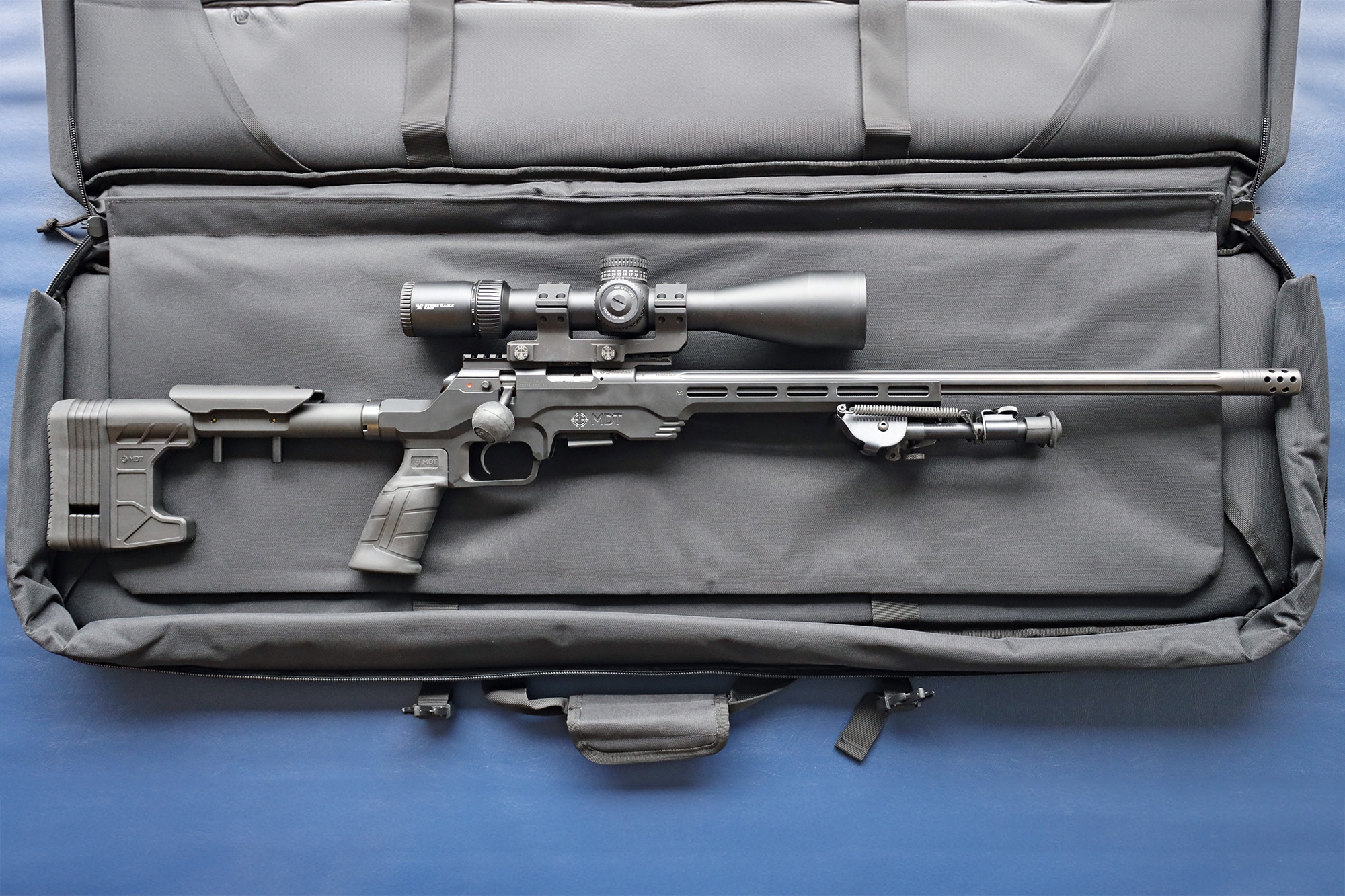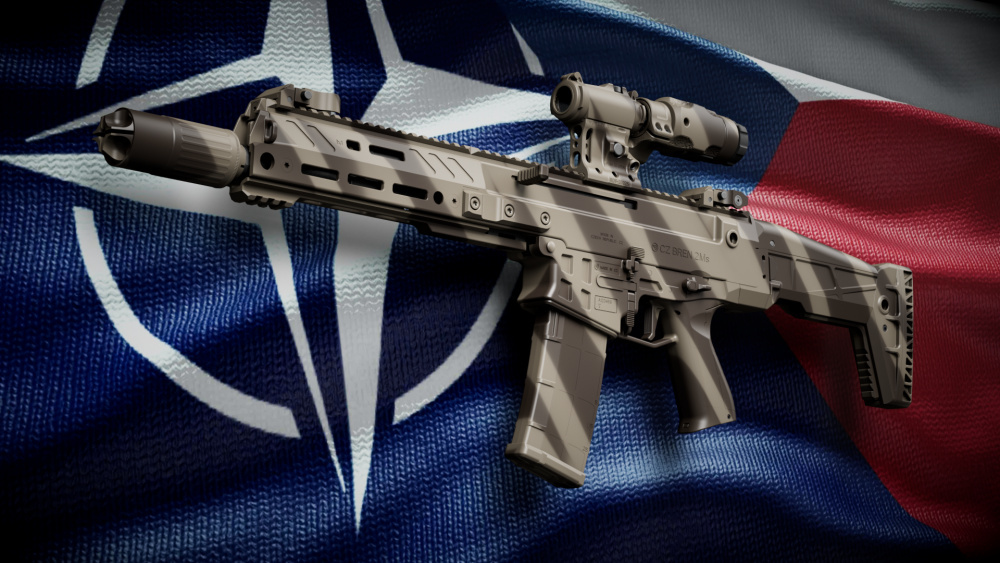Especially when hunting dangerous game, the author, like many other hunters, is a convinced supporter of the 98 Magnum action and its European and American offshoots. For 25 years, he has been using a CZ 550 Magnum bolt-action rifle chambered for the .416 Rigby big game cartridge for hunting buffalo, other pachyderms and big antelope. The Czech Magnum action is very similar to Mauser's. When there were hardly any good old Mauser magnum actions left in the 1980s, even high-end companies like Rigby and Hartmann & Weiss used the Czech actions in their high-priced rifles. The German company Franconia offered an inexpensive tuning package for the CZ 550 at the time: an enlarged Rigby magazine that holds four cartridges, polishing of the bolt action as well as lengthening of the bolt handle for easier repeating, blocking of the set trigger, relocation of the front sling swivel with half ring to the barrel for more comfortable carrying, steel sights.
The author got along well with this tuned bolt-action rifle, only its hog back stock was a handicap. He therefore had a custom stock made, because with the original stock the rifle had a strong recoil flip. Since then, the rifle has been perfect with the custom-made stock without any aiming correction, both with and without a scope. The price of the stock at that time is not disclosed by the owner, so that gunsmiths today do not tear their hair in despair. In addition, a light Vari XIII from Leupold with 1.5-5x magnification was added by means of a pivot mount with lever, perfectly suited to big game hunting during the day. The whole thing cost around 6,000 euros complete at the time. In over 30 big game hunts, mostly in Africa, mostly on buffalo, there has never been a problem with the gun and optics – at most once with the "helmsman". However, for shots at more distant big game, he needed a lighter, more powerful cartridge. After the good experiences with the .416 Rigby, the choice again fell on a CZ 550 Magnum, this time in .375 Holland & Holland Magnum.
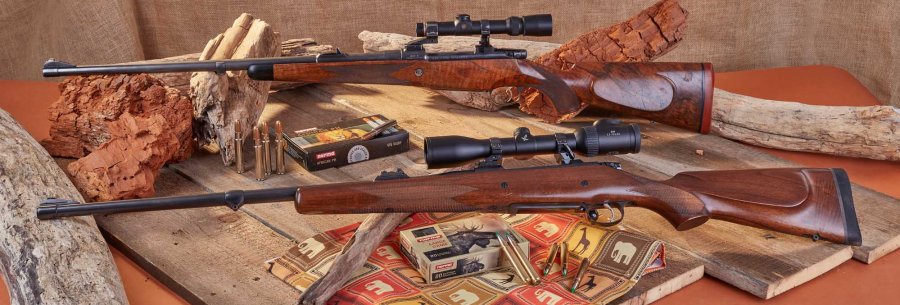
The CZ 550 Magnum in .416 Rigby with Swarovski Z6i scope
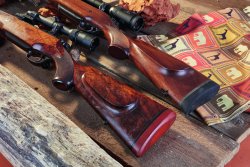
The gunsmith procured a new gun with a straight stock. At the current price for a custom stock of about 4,000 euros, the author preferred to do without the latter. So this time the reworking of the CZ rifle was done in a slimmed-down form: the set trigger was deactivated and the gunsmith managed to set the trigger almost equal to that of the rifle in .416 Rigby. When changing rifles, this is an advantage that should not be underestimated! The clean-release direct trigger breaks without creeping at 850 grams. Again, the bolt handle was lengthened for easy grip and the front sling swivel was relocated onto the barrel. The action was already satisfactory without further reworking, and the magazine capacity (5 + 1) was adequate without conversion. The plastic front sight, unsuitable for hard use, was replaced with a sturdy, high-contrast steel bead sight. Initially, the author had a 25-year-old, silver-colored scope mounted that was perfectly adequate for daytime and early twilight hunting – but it just didn't look good. So he had a Swarovski Z6i (1.7-10x42) fitted and is prepared for almost anything. Although the custom stock of the .416 Rigby rifle and the CZ standard stock of the new rifle hardly differ in shape and dimensions, the .416 is much easier to handle. But with a custom stock, it would have been over 10,000 euros. In this price range, one would rather go for the original Mauser Magnum. The rifle was loaded with Federal Premium (300 gr, Swift A-Frame) ammunition. With the corresponding full metal jacket bullet, three semi-jacket rounds and two full-jacket rounds resulted in a grouping of just under five centimeters. With this, you are prepared for all hunts.
A look at the technology of the CZ 550 Magnum
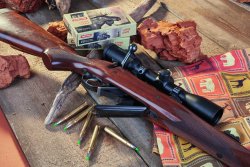
In older tests, it was criticized that the CZ Magnum rifle with a classic straight stock was almost impossible to shoot using the open sights. The shooter had to tilt the head so much that a fast aiming was impossible. With newer, straight stocks like the .375 model (from 2018), this is no longer a problem. Aiming with the rear and front sights works without any problems. The straight stock ends in a two-centimeter-thick, closed rubber cap. Moderate LOP changes by lengthening or shortening the stock are therefore easily possible. The checkering provides good grip. The stock as a whole is made of plain, barely grained wood and has been given a matte finish. The magazine holds five cartridges, plus one in the chamber. The author advises against loading six cartridges into the magazine, which is possible, because when repeating there can then be feeding problems with the first cartridge from the magazine. But "five plus one" should be enough for all hunting situations. It is true that the magazine floor can be opened downward by means of a push button in front of the trigger guard. But the author recommends that this push button be set to be so difficult to release that it can't open automatically because of recoil when shots are fired. That would be fatal in dangerous situations!
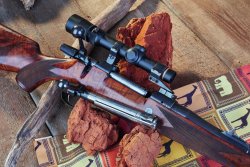
magazine – the so called "controlled round feed".
The modified 98 action has been manufactured in the Czech Republic for almost 100 years. It has only been slightly modified. The safety is no longer incorporated into the bolt. Disassembly of the bolt is simple even for laymen. It is enough to press the button on the left side of the bolt and the latter can be removed. The safety slide on the right behind the bolt handle only have two positions, "on" and "off". There is no middle position as on the 98 to open the bolt whit the safety on. As with Mauser, the bolt is locked by means of two locking lugs on the bolt head. The third locking lug is located directly under the bolt handle. The long extractor, which is responsible for safe repeating and equally safe feeding of the next cartridge and does not rotate with the bolt, has been retained. During energetic repeating, the cartridge case is ejected positively and the next cartridge is fed just as safely.
The .416 Rigby and .375 H&H Magnum cartridges in comparison
The .416 Rigby is undoubtedly a true big game cartridge, often used by professional hunters even in the days of the old "ivory hunt" over 100 years ago. The author has been using it successfully for 25 years. He currently uses ammunition from Norma (African PH) with 450 grains, or 29.2 grams of bullet weight. Their semi- and full-metal jacket Woodleigh bullets shoot perfectly in this rifle. Muzzle velocity is 655 m/s, and muzzle energy is 6,258 joules. For comparison, the values of the .375 H&H Magnum – bullet weight: 350 gr (22.7 g), muzzle velocity is 700 m/s, energy 5,559 joules.
Hunting on the African continent – Practical tips for cartridge selection
If you only want to kill a buffalo once in a lifetime and otherwise hunt "thin-skinned" African, American, Asian and European big game such as big antelope or deer, you are better off with the .375 than with the .416 Rigby. The latter is recommended for hunters who have succumbed to the "buffalo passion" and frequently hunt these pachyderms or even elephants. The .375 H&H is rather the lower limit for pachyderms. You can't afford to make mistakes with it. The author shot several buffalo and (problem) elephants with both calibers.
Problem elephants occur in populated areas, where they cause severe damage to the fields of local people. Occasionally, humans are killed in the process. Culling of such elephants is done by special license at financially favorable conditions. In most cases, however, the ivory may not be exported. The effect on a buffalo of the .375 was not always satisfactory, even with good hits. We were also able to observe this during buffalo hunts that we accompanied. So with the .375, only fire safe shots (heart, both lungs)! The .416 Rigby has its strengths on pachyderms as well as other big game at short and medium ranges. However, most hunters are better served with the versatile .375 H&H Magnum. It can also be used very well in domestic hunting grounds on red deer and strong sows. The new CZ 550 in .375 Holland & Holland was first used abroad three years ago in northern Cameroon, with Federal ammunition and at that time still with the old (silver) Leupold scope. Of course, you can't give a final verdict after such a mission, but the results coincided with what was said before. Two medium sized antelope (Hartebeest and Waterbuck) came down easily with shots at around 250 yards. There, you were better served by the .375 than the .416 Rigby. The third antelope, a kob (grass antelope), was taken at 120 yards, which would have been easy with either rifle. It was more problematic with the buffalo, shot at 70 yards with the Swift A-Frame bullet, with some grasses in front of the buffalo's shoulder. A search followed and it received the coup de grâce. The first shot was about ten inches too far back. The bullet was already larger than the caliber, which suggests that the it had hit an obstacle in front of the buffalo. Without being able to prove it, the author suspects that the .416 Rigby would have been the better choice in this situation.
For more information on the CZ 550 Magnum and other firearms from the Czech manufacturer, please visit the CZ website.



